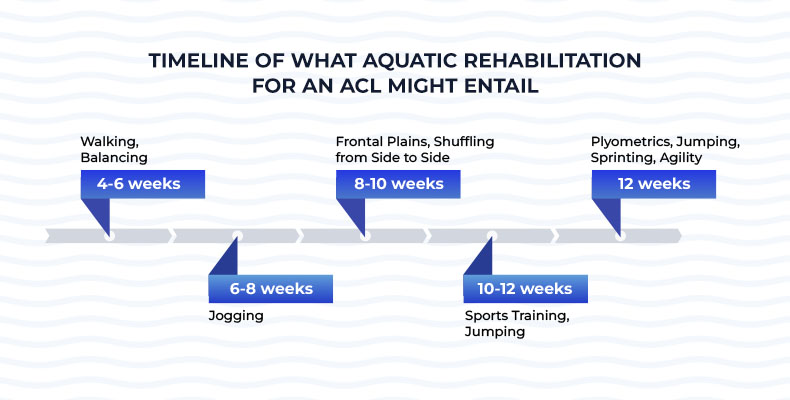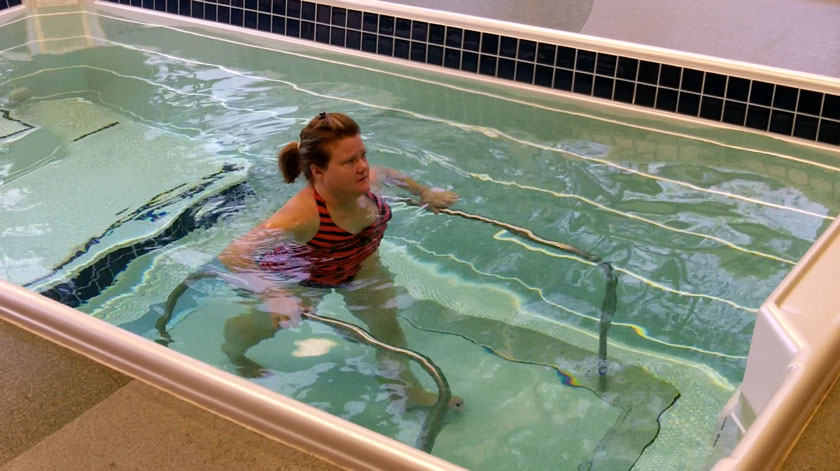How ACL Hydrotherapy Exercises Can Help Patients Heal Faster
Tearing the ACL brings a patient’s whole life to a halt. Thankfully, surgery to fix this injury is minimally invasive and has a high success rate. Most patients recover and return to full mobility after healing. However, the healing journey after an ACL tear can take between six to nine months.
That’s a long time for athletes, parents, college students or anyone to be out of commission. Trying to rush the healing process can lead to further injury and an even longer recovery period. While healing an ACL tear will take time, there are things patients can do to speed up the process in a healthy way. Choosing hydrotherapy for physical therapy exercises can help patients heal faster so they can get back to their lives sooner.
What Is an ACL Injury?
When patients tear their ACL, they stretch or tear the ligament connecting their shinbone and thigh. Not all ACL tears have the same level of damage — some are much more serious than others. Usually, an ACL sprain is caused when patients plant their foot down and then twist their knee.
Athletes who play high-impact sports are at a higher risk of an ACL tear because they frequently combine weight and direction changes. The symptoms of an ACL tear include a loud popping noise, instant swelling, severe pain and a sense of instability when patients try to put weight on that leg.
The Importance of Physical Therapy for ACL Injuries
Physical therapy and rehabilitation are very necessary for complete healing and regaining use of a knee after an ACL tear. ACL physical therapy helps retain, strengthen and retrain a patient’s muscles and muscle memory while protecting the ligament. This muscle retraining helps patients return to daily activities and sports faster with less injury risk.
Hydrotherapy takes the benefits of physical therapy for an ACL tear even further. Because water is so supportive, patients can safely perform movements underwater than they could on land. Water provides resistance, which strengthens a patient’s muscles while also reducing the weight impact of their body on their knee. The slow, steady movements patients achieve underwater are perfect for safely retraining their muscles.
ACL Physical Therapy Protocol
At HydroWorx, we’ve helped many athletes recover from ACL tears with our aquatic wellness and fitness pools. Here’s what we’ve discovered about the impact of hydrotherapy on ACL rehabilitation.
Olmer Cruz, an aquatic therapist at Peak Performance in Lynbrook, NY, works with athletes who have suffered ACL injuries. Olmer’s goal is to return his athletes to the playing field quickly and safely. To do this, Cruz utilizes both aquatic and land therapy. Combining water’s buoyancy and low impact, Olmer uses the HydroWorx 500 Series pool to retrain his athletes, perfect their muscle memory, advance their range of motion and reduce their inflammation.
Using the instant feedback from the HydroWorx pool, Cruz also helps adjust an athlete’s gait to prevent future injuries while focusing on change of direction and stability maintenance for their core.
According to Cruz, athletes who only use land rehabilitation seem to be a step behind those who benefit from aquatic therapy. When training in the safe environment of a HydroWorx pool, athletes can begin advanced exercises much sooner than they would on land. Here’s a timeline of what aquatic rehabilitation for an ACL might entail:

- 4-6 weeks: walking, balancing
- 6-8 weeks: jogging
- 8-10 weeks: frontal plains, shuffling from side to side
- 10-12 weeks: sports training, jumping
- 12 weeks: plyometrics, jumping, sprinting, agility
Today, Peak Performance is working to train more and more of their therapists in both aquatic and land therapies. Watch Cruz’s full review on aquatic therapy solutions for ACL rehabilitation, or follow along as he leads one of his athletes through an aquatic therapy session at 12 weeks post-op.


